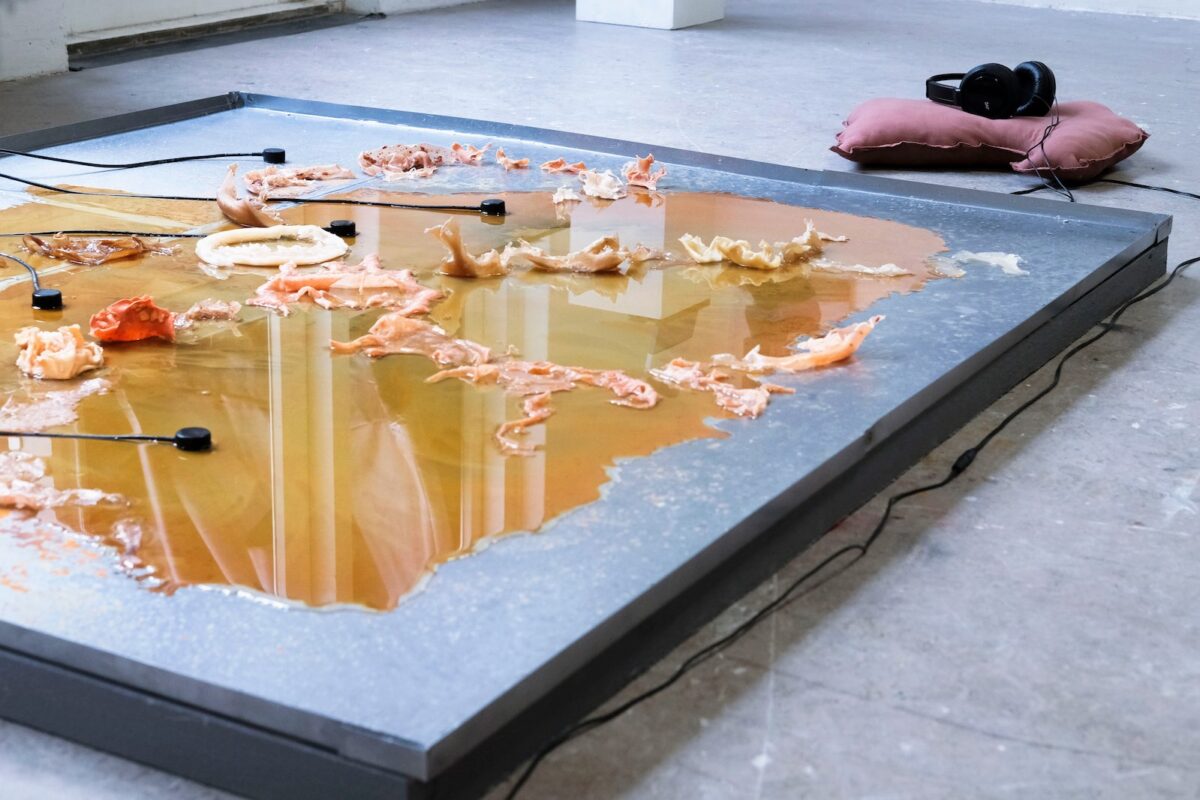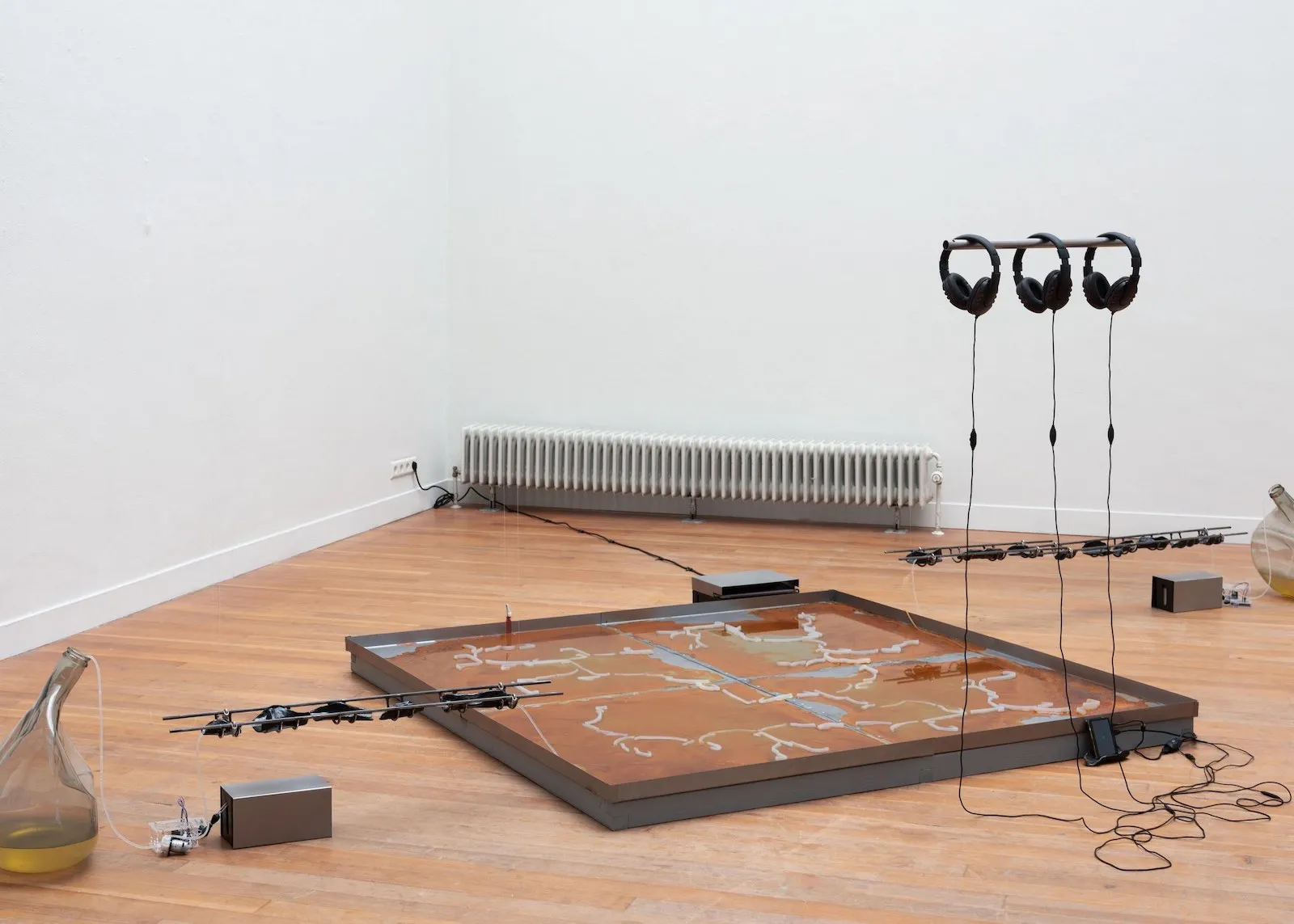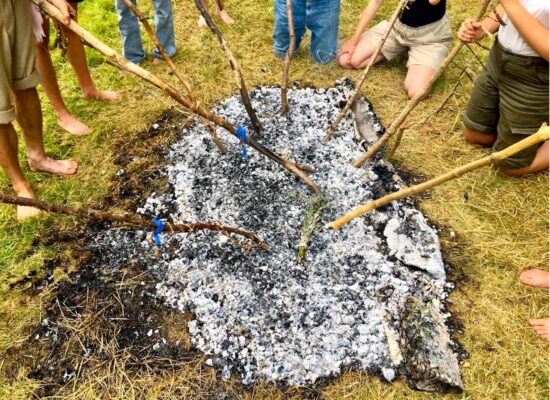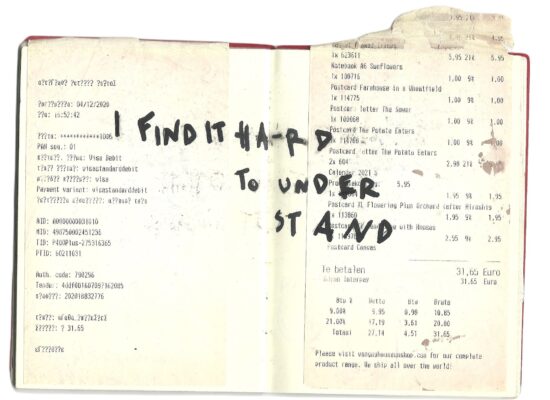Based in The Hague, The Netherlands
Website https://ceciliefang.com
Research project at the end of the sentence, it rotted
Location Royal Academy of Art The Hague, The Netherlands and independent
Can you describe your research project?
In the work ‘at the end of the sentence, it rotted’, I have been interested in a history of constructed languages that served different intentions of resistance and how language at times fails in inclusion. When the intention of our use of words is to be systematic and efficient in our ways of communicating, I am instead interested in asemic as poetics and how a linear meaning making is not at the goals of poetics. ‘Asemic’ is defined as “having no specific semantic content”, or “without the smallest unit of meaning”. It’s a wordless form of writing that is open in its semantic form. To me, it came to give a word for what it means not to speak a language, as when you are outside of a language, you purely look upon words as strokes in relation to phonemes – a relationship, which is asemic. In this process, I started looking upon organic processes as rust and decay as bio-asemic patterns and the potentiality that lies in their material transformation; just as language is always semantically shifting, how can such shifts also be materialized in both visual and sonic transformation? And how can such ecological processes also be a materialization of languaging (looking upon a meaning-production as not fixed, but process-oriented), is what I asked myself.

Why have you chosen this topic?
I’m interested in this topic because of my own experience within migration and how not speaking a language partly leaves to exclusion, when crossing borders from one country to another. Experiences that lead me to look upon language as partly being a field of linguistic hierarchies. Similarly, I question the concept of the nation state mother tongue as a political construct and tool, as I also partly grew up forgetting the language I was taught the first, Mandarin. A language I still need to communicate with loved ones, but also a language I have had to constantly struggle with to re-remember.

What research methods do you use?
I consider my work auto-ethnographical as my starting point is either a personal observation and/or writing with a very visible I, after which it becomes an osmosis of knowledge with both footnotes from poetry and critical theory. My research methods are therefore very interdependent on literature, but as I am also very much a material-based maker, I do move between working with sculptural elements and thinking through a materiality alongside writing and reading.

In what way did your research affect your artistic practice?
Research helps me position my experiences in a collective context, and it helps me navigate and make choices within the creation of a work, but to me; research is also the work itself.
Even within a final installation and performance, an outcome might be spatial, but even spatiality and performativity are accumulations of theoretical layers. As I see research as open-ended process, in which I partly reject closure, I believe this thinking is also reflected within my artistic work, as my installation is transforming and forever-evolving as its own ecosystem. The installation ‘at the end of the sentence, it rotted’ similarly rejects closure and looks for a never-ending process that continues after words.

What are you hoping your research will result in, both personally and publicly?
I hope my research will open dialogue around the ways we communicate and what power structures lie behind, which are not always that visible. Through the personal, I hope what at times stay within academic theory can find roots in the emotional – and by finding roots also situate knowledge as relational and revisit the personal as a collective experience.




